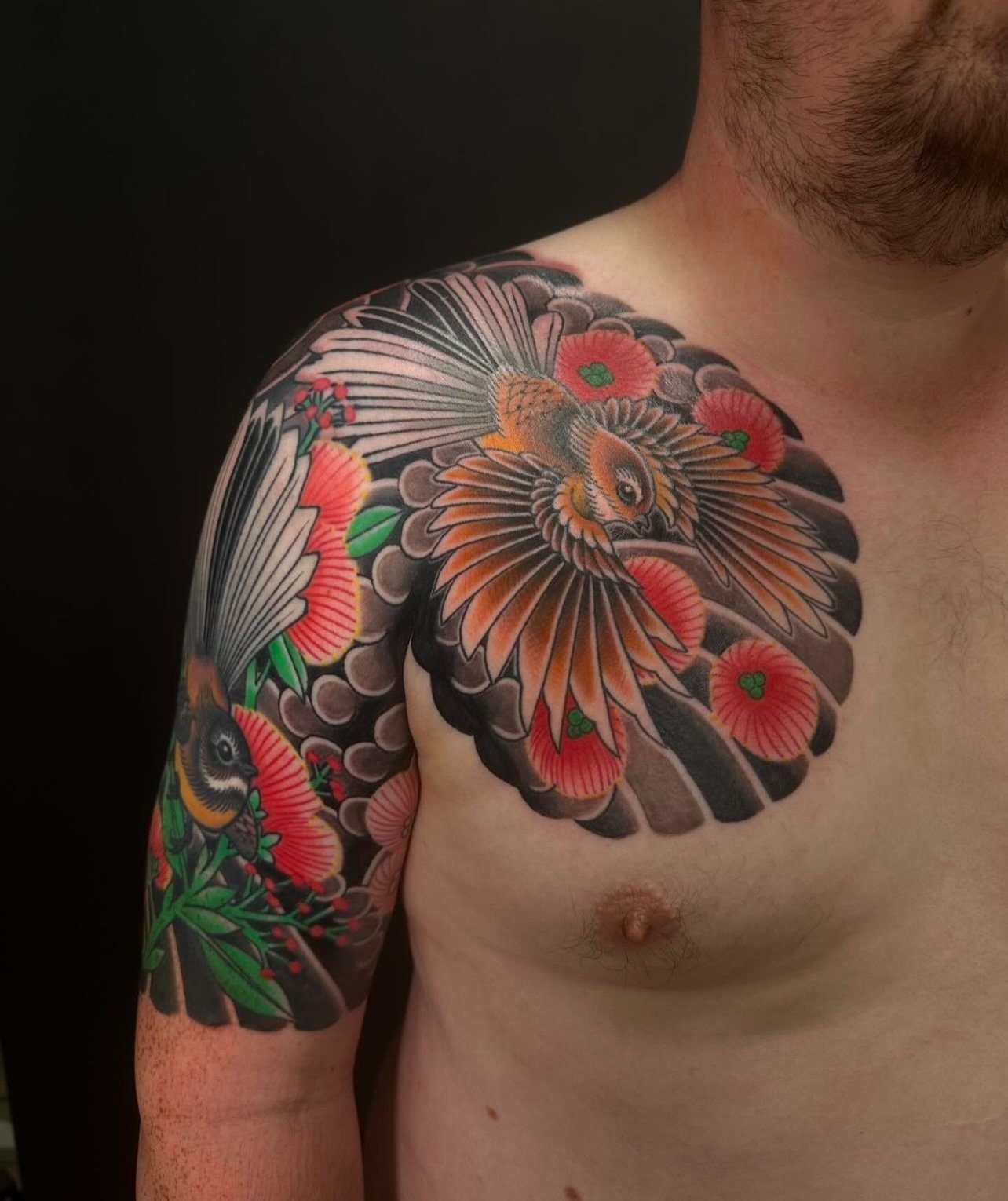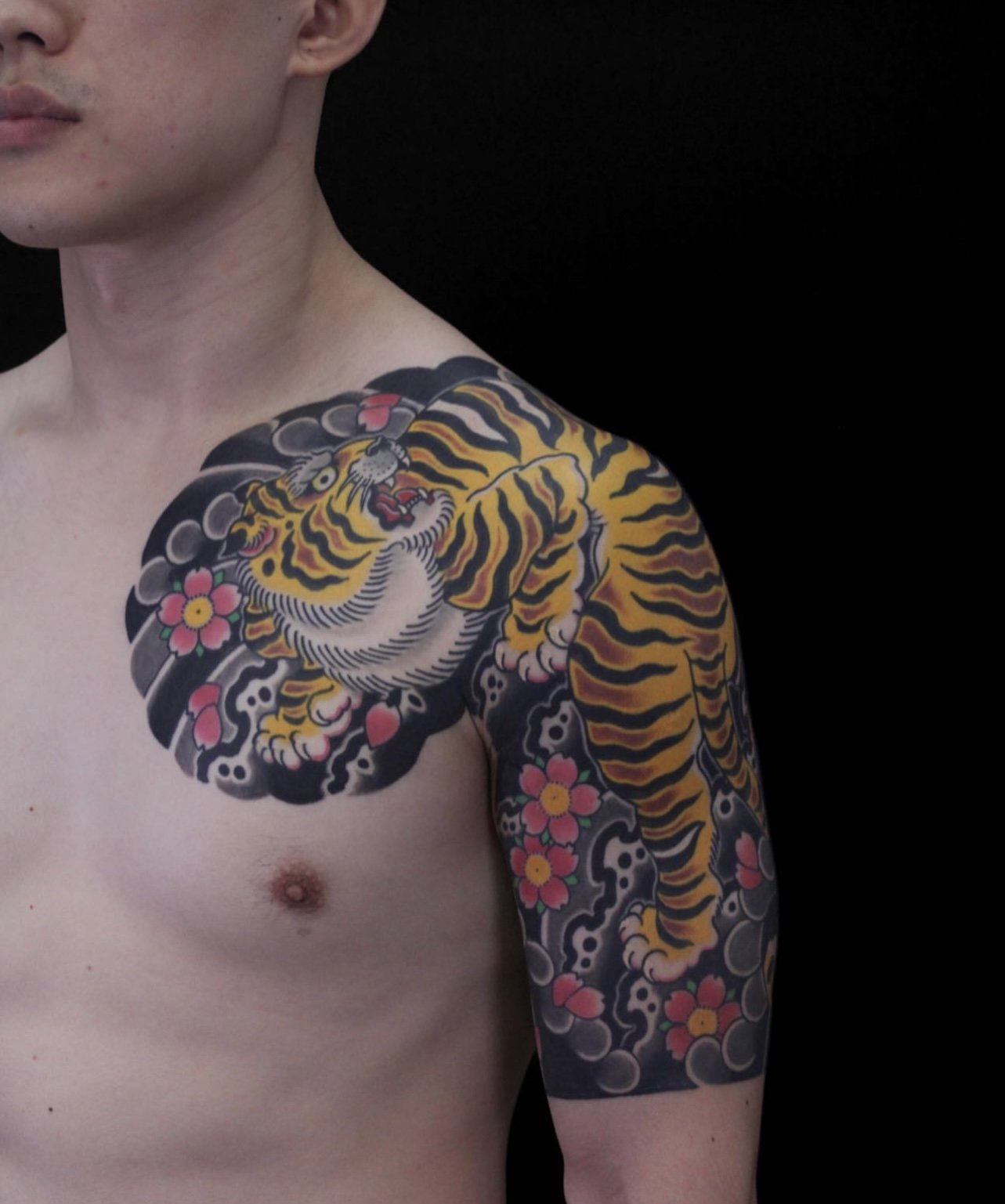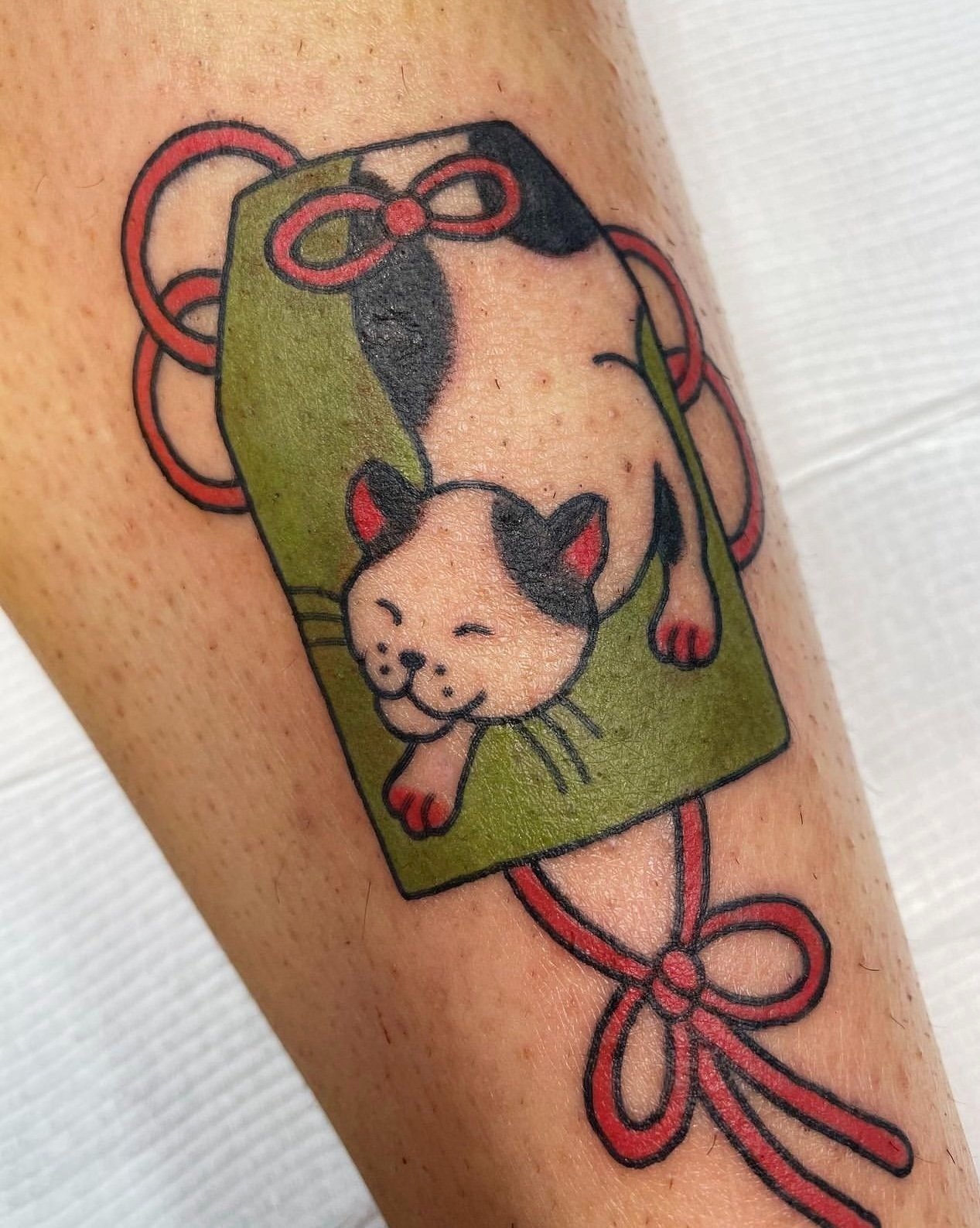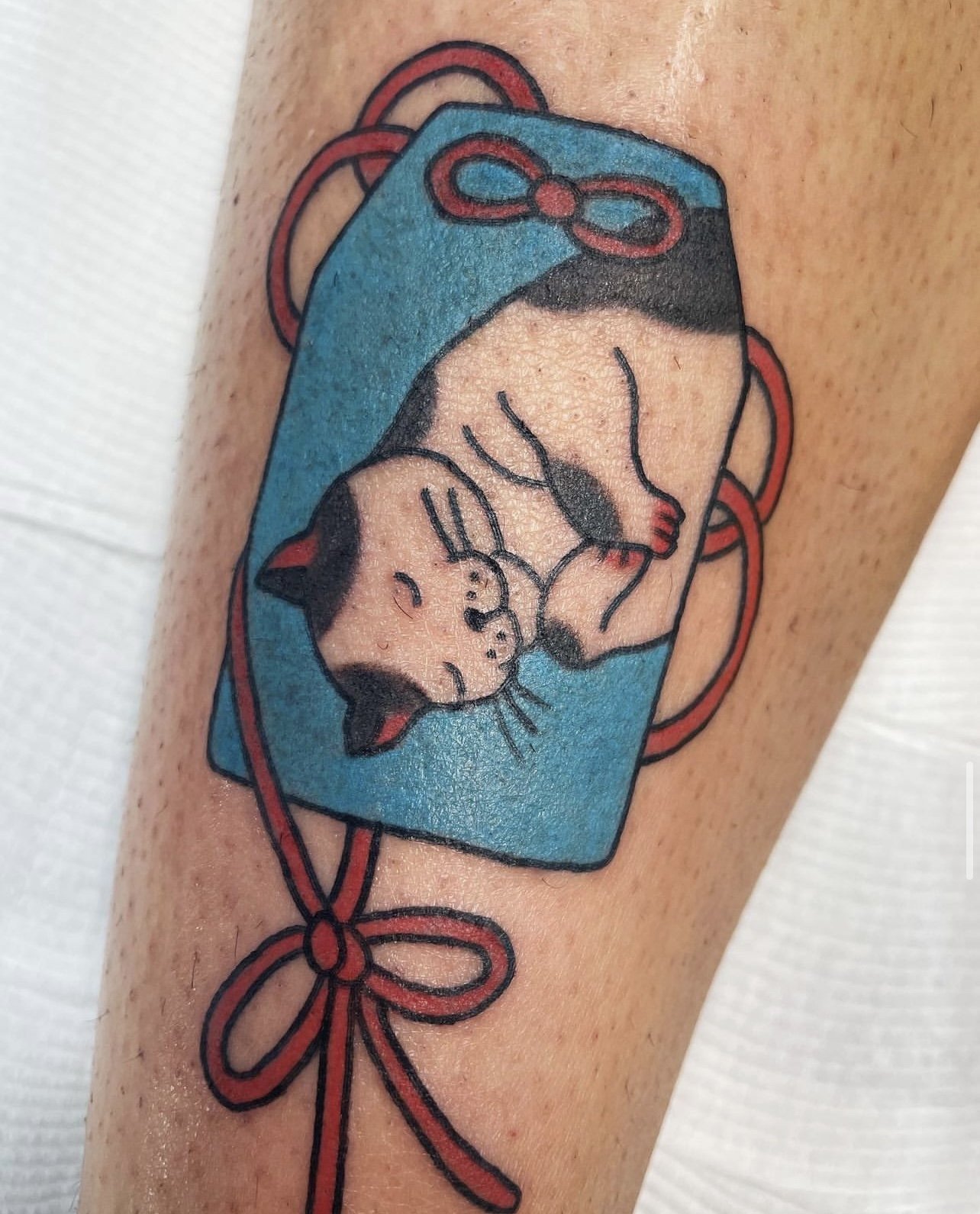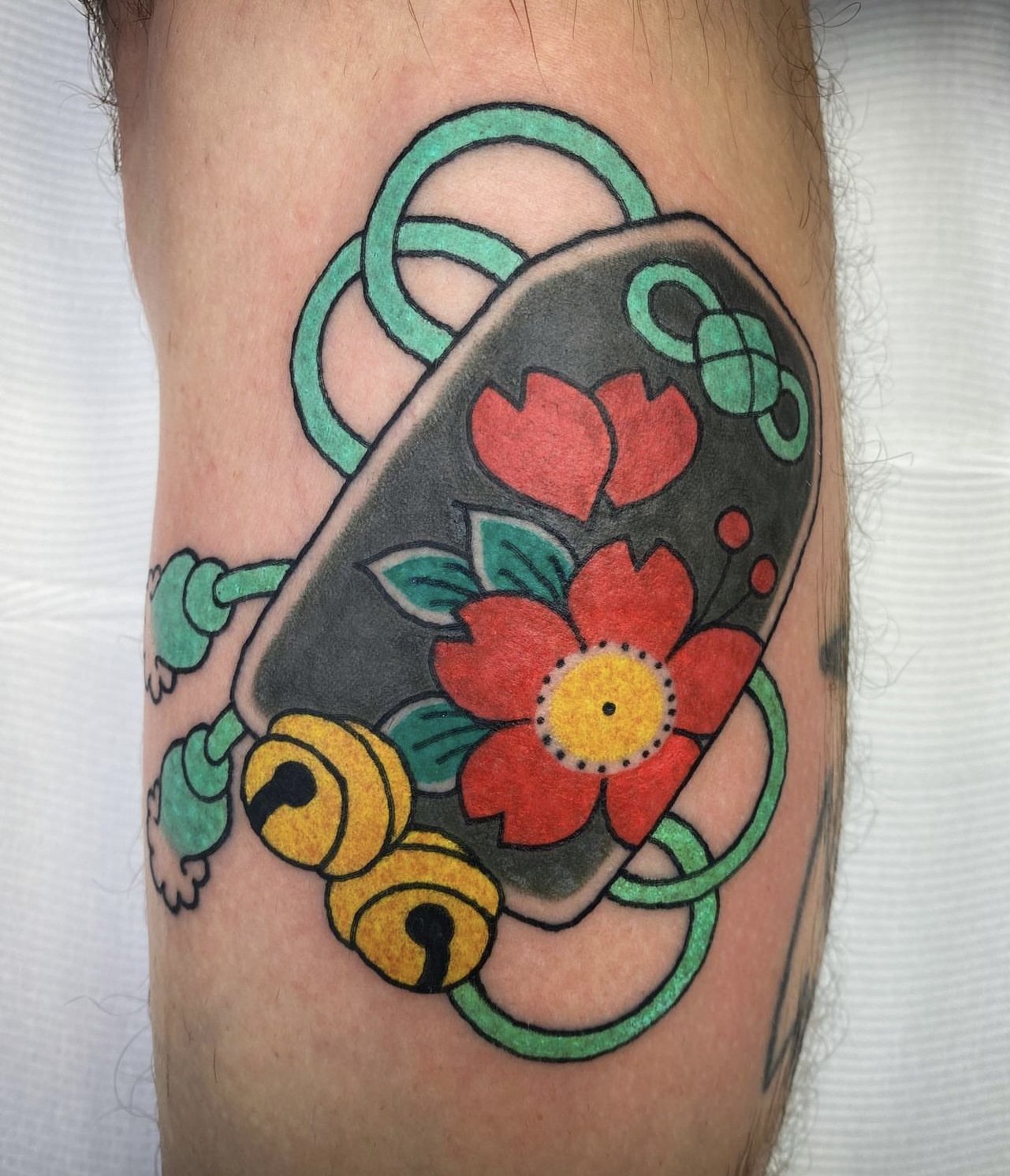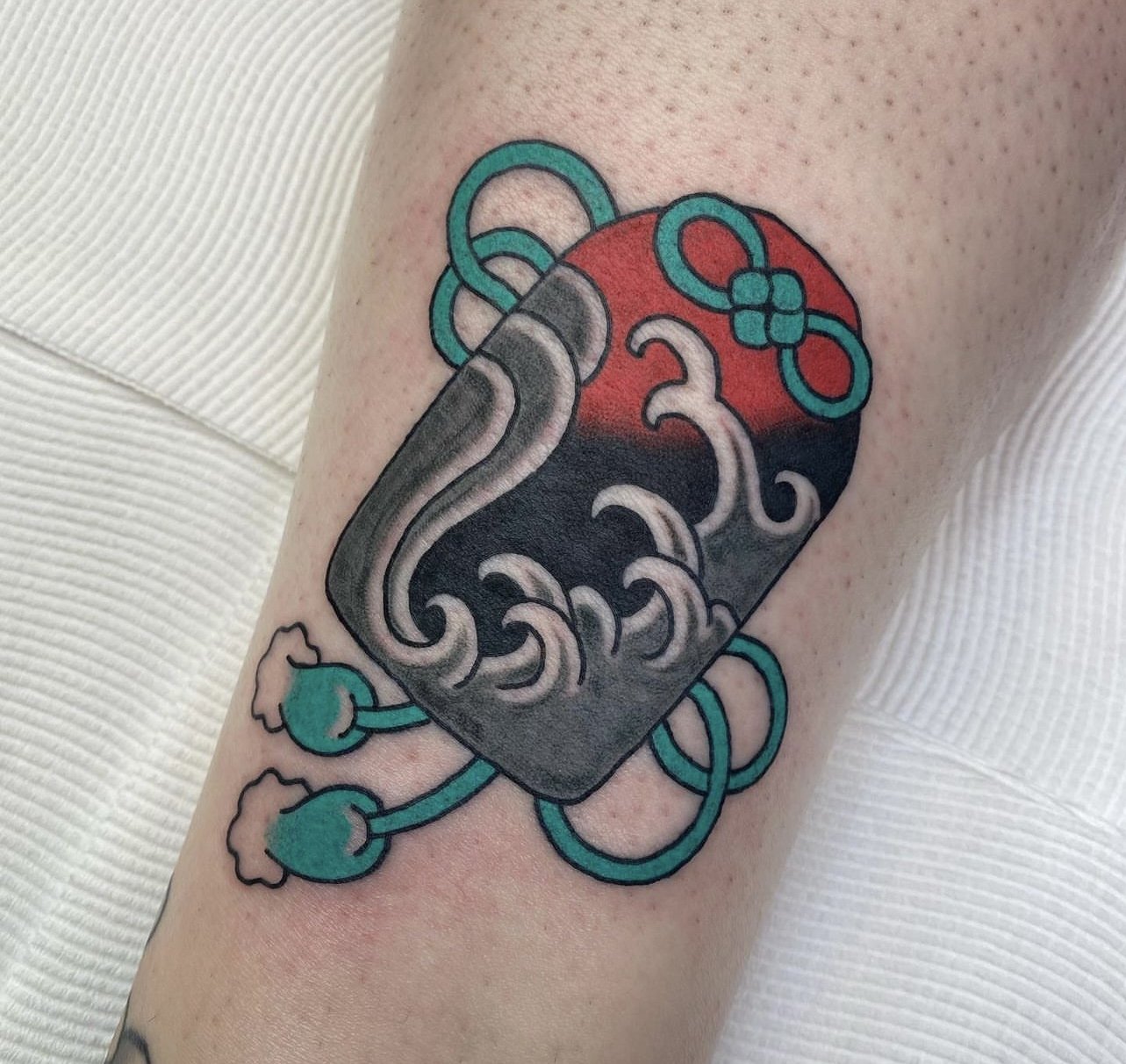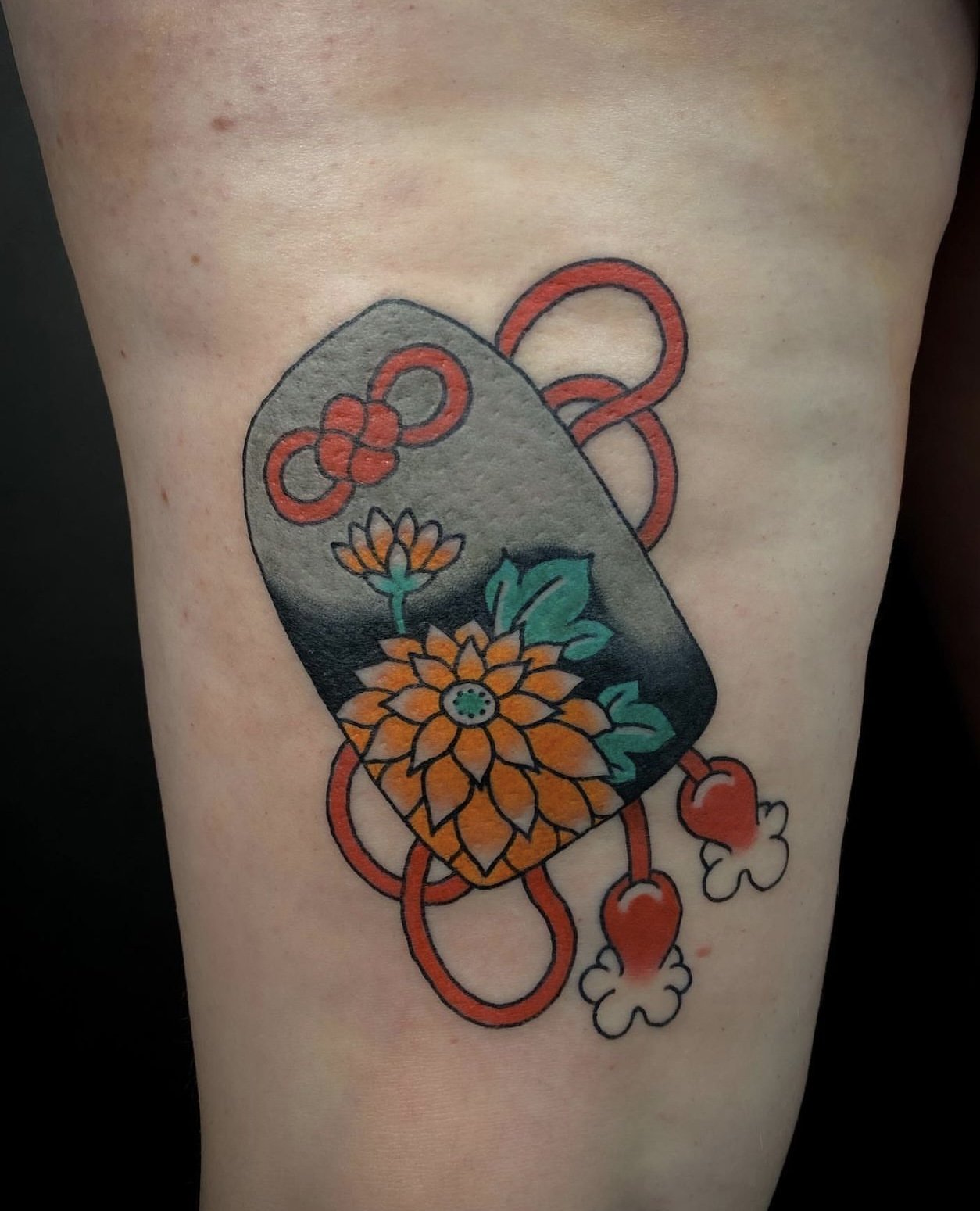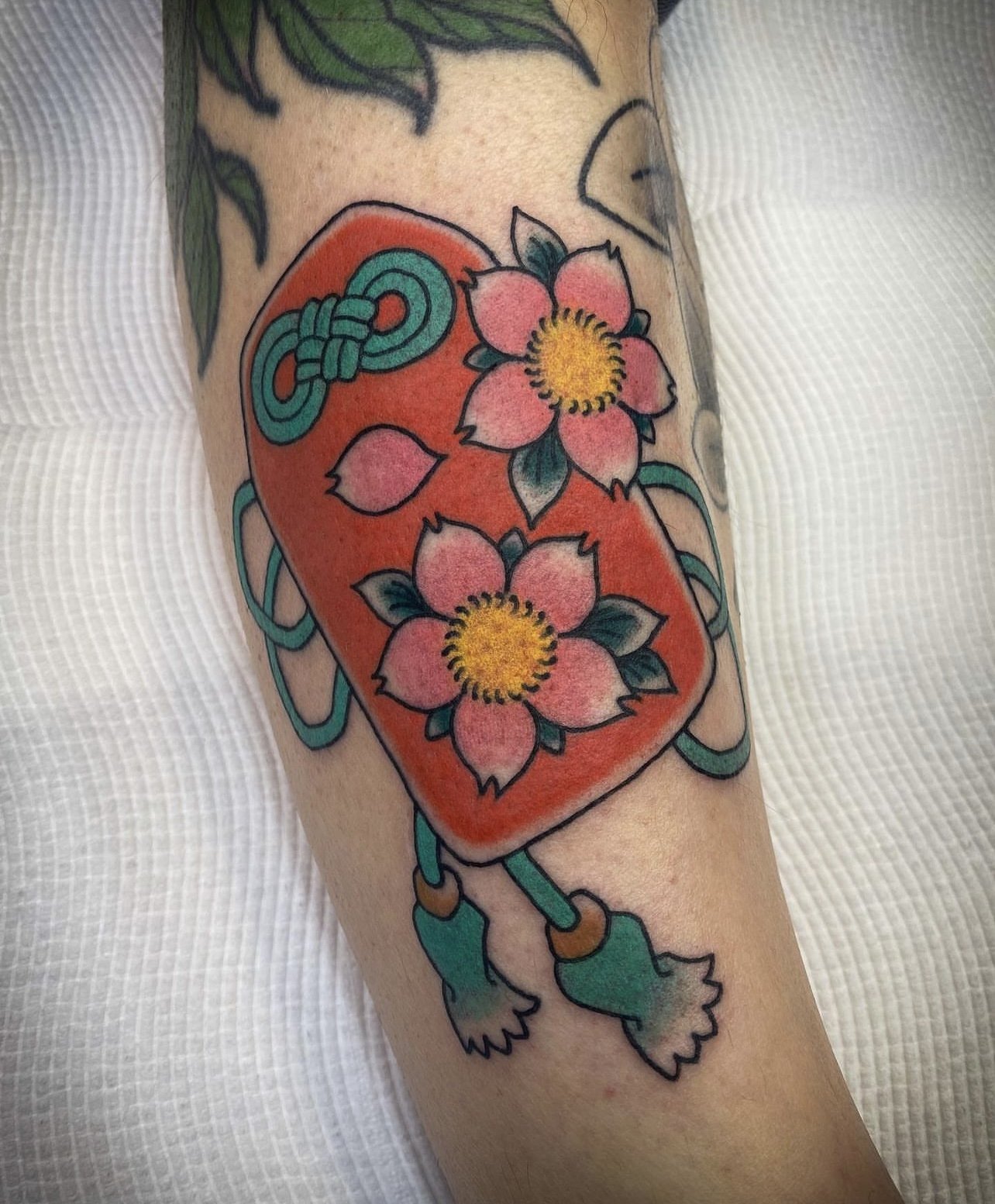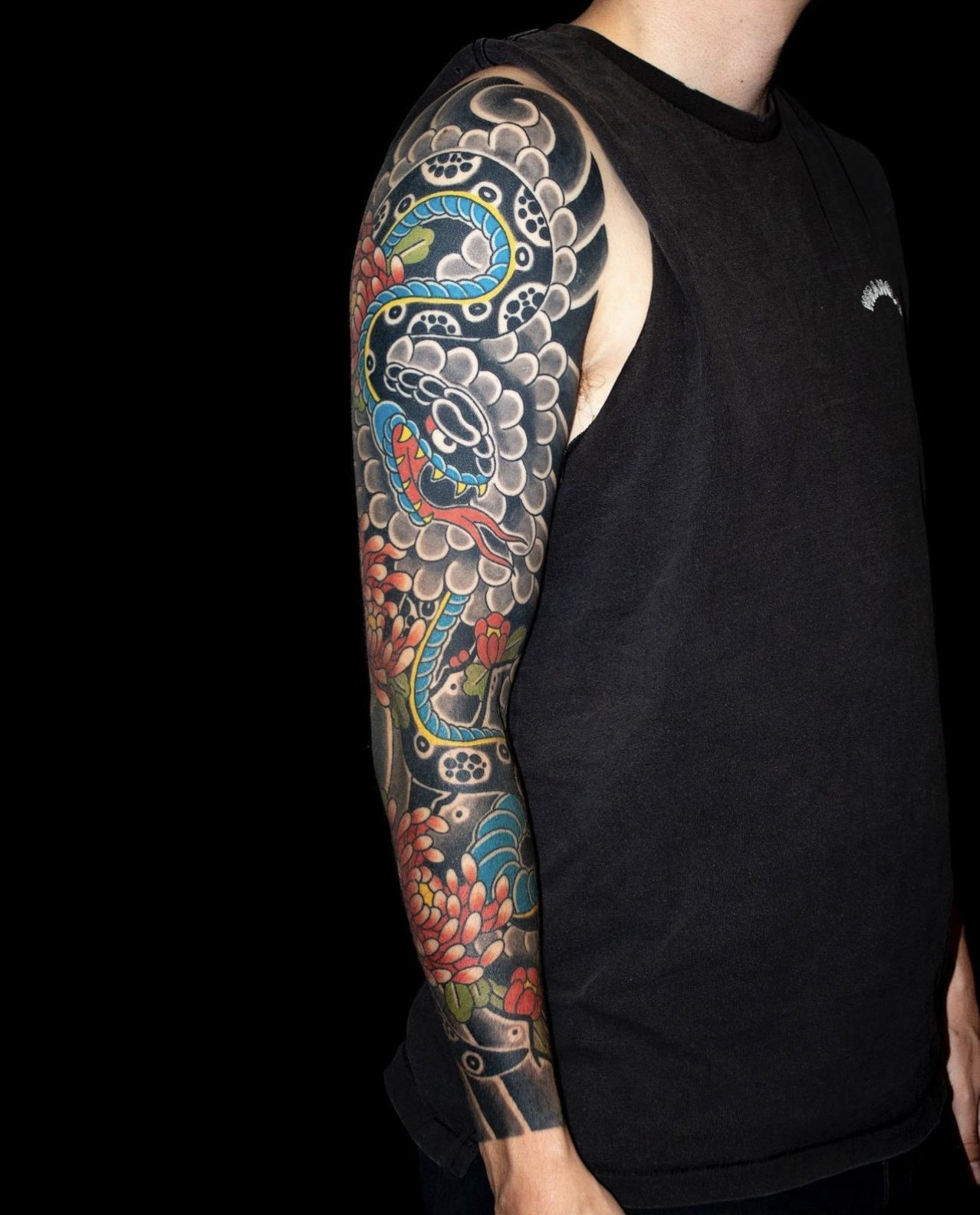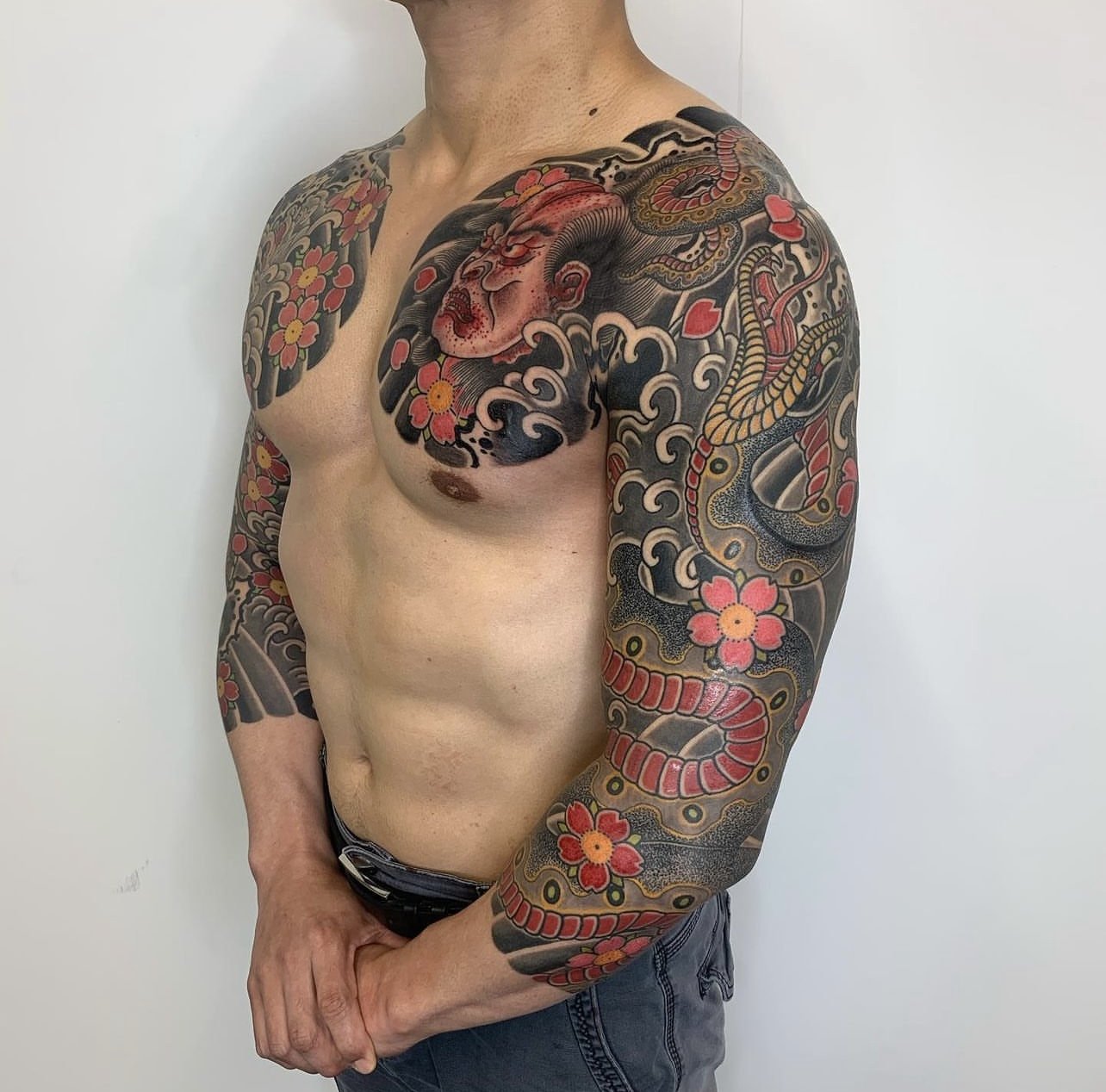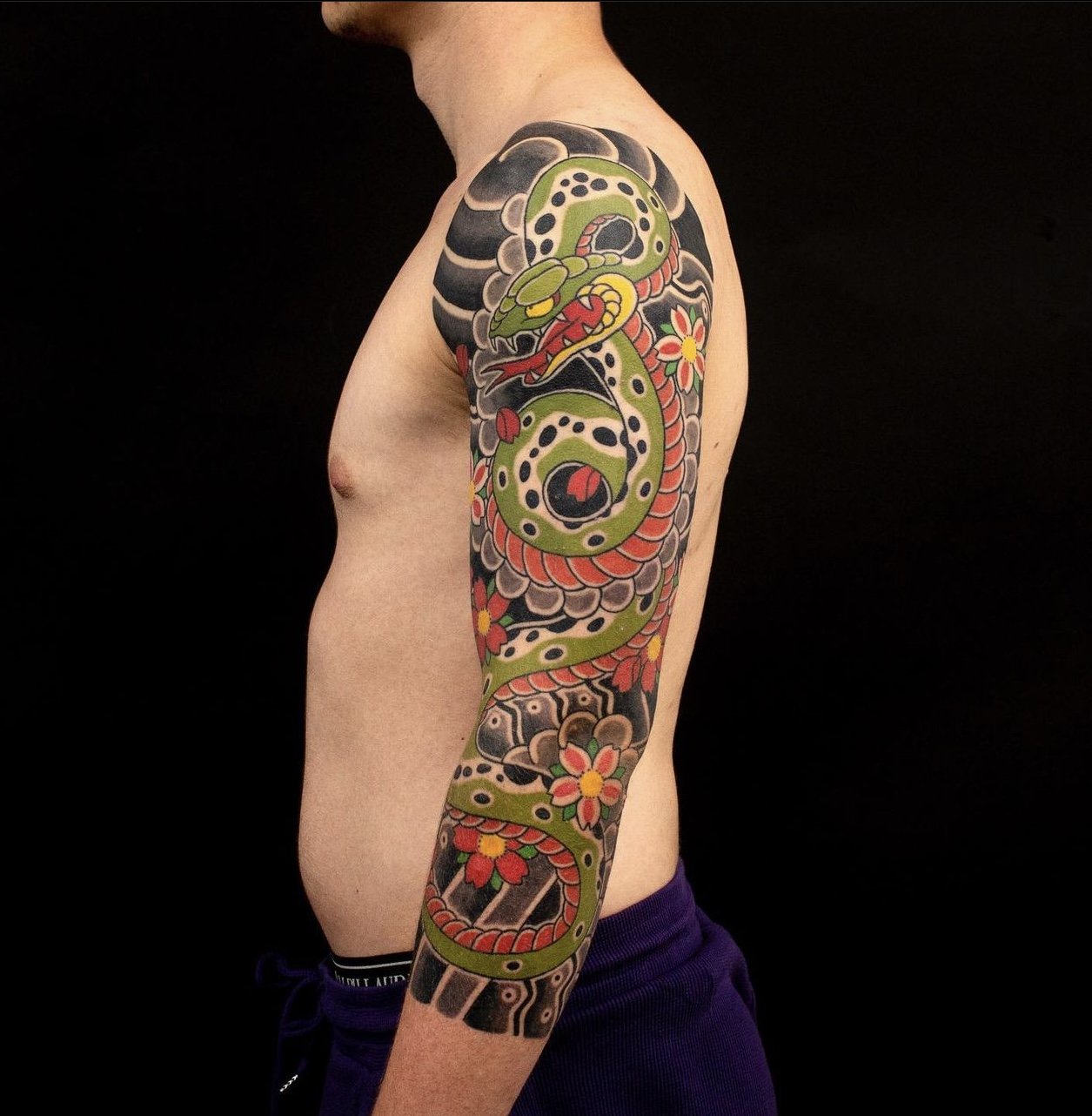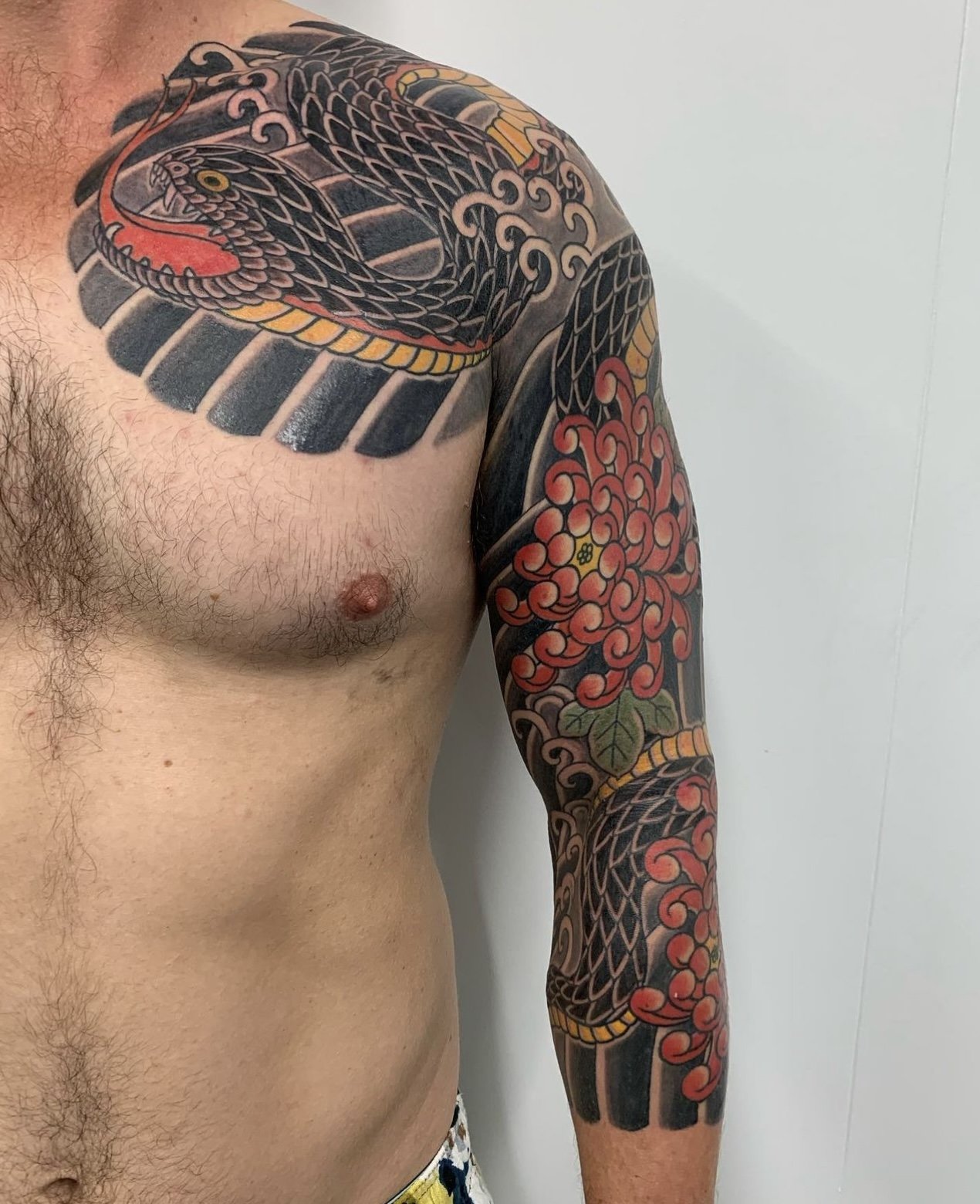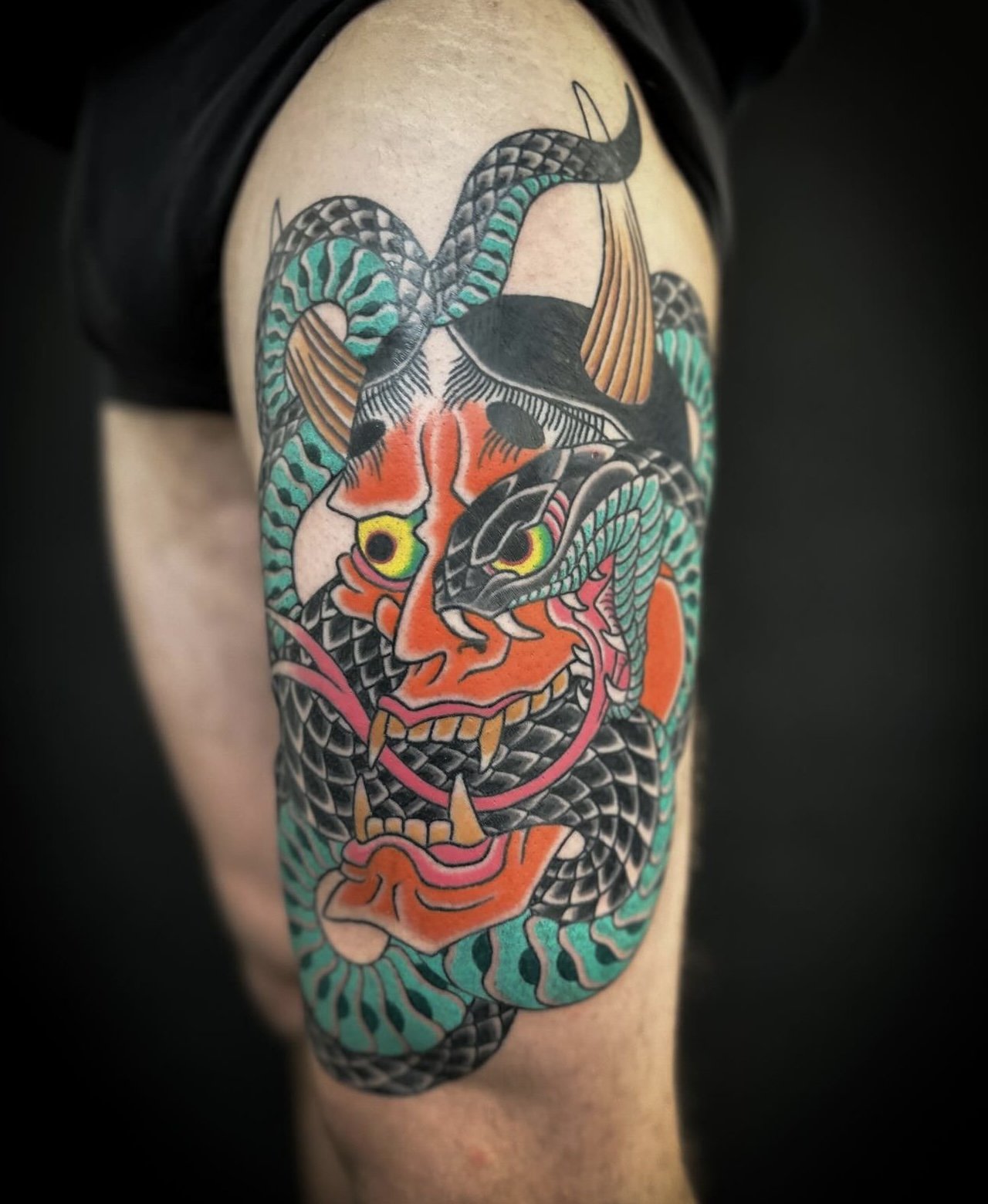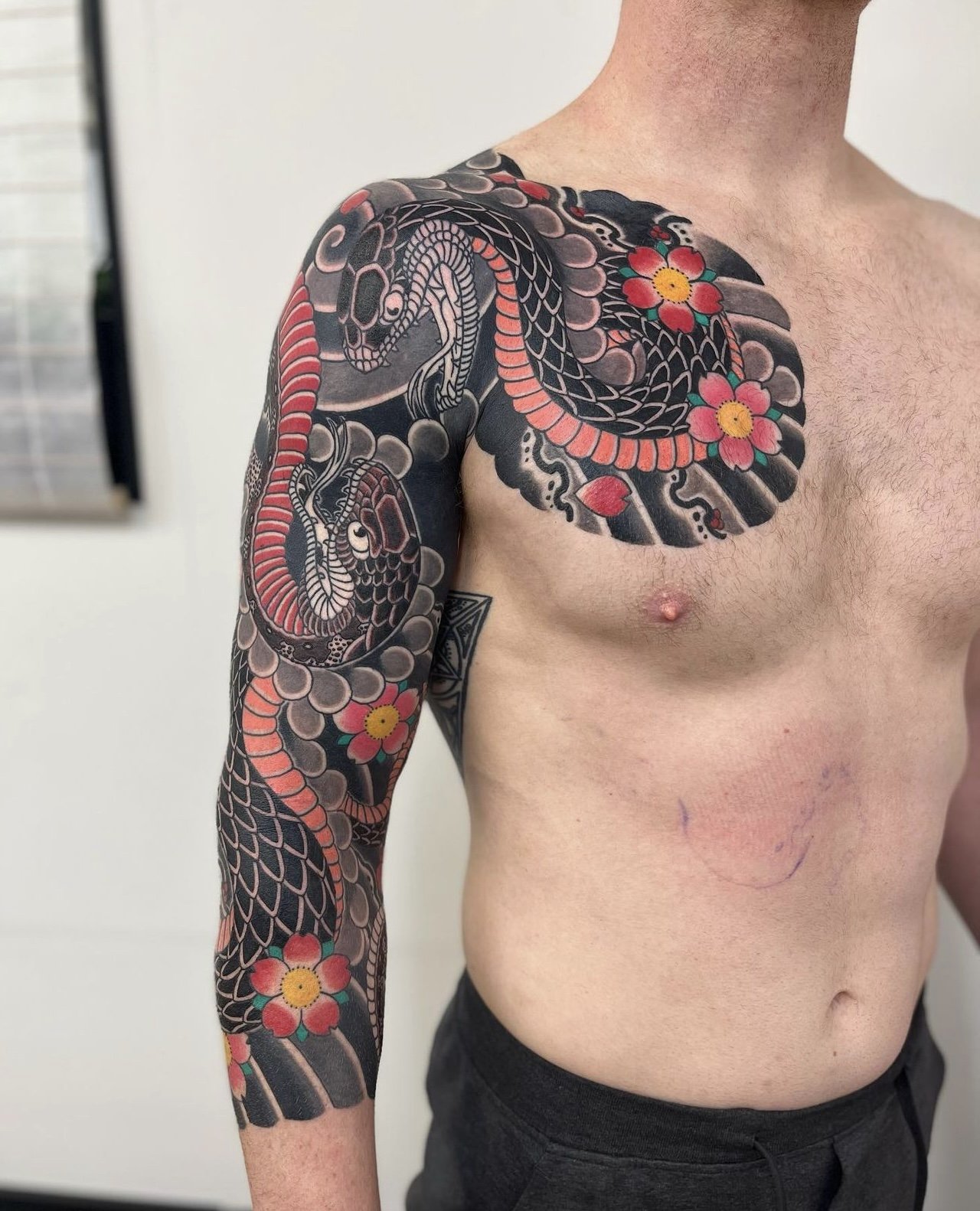In the realm of tattoo art, a captivating fusion of cultures has emerged, blending traditional Japanese motifs with indigenous symbols from New Zealand. Among these, the Piwakawaka (New Zealand fantail) and Pohutukawa tree stand out for their symbolism and visual appeal - Tom jumped at the chance to do something a little different when this client request came through!
In Maori mythology, the Piwakawaka is revered as a messenger from the spiritual realm, embodying traits of agility, curiosity, and protection. In Japanese tattoo art, it symbolizes freedom and the fleeting nature of life, often depicted against a backdrop of black and grey, with vibrant colors highlighting its presence.
Known as the "New Zealand Christmas tree," the Pohutukawa symbolizes resilience and enduring beauty. In Japanese tattoo art, it represents solace and renewal, often set against serene landscapes rendered in black and grey, with the crimson blooms of the tree standing out as a colorful foreground.
The fusion of Piwakawaka and Pohutukawa motifs in Japanese tattoo art celebrates unity and diversity, weaving stories that transcend cultural boundaries. In Auckland, renowned tattoo artists adeptly blend these indigenous symbols with traditional Japanese techniques, creating stunning pieces that honor both cultures and the natural world.

